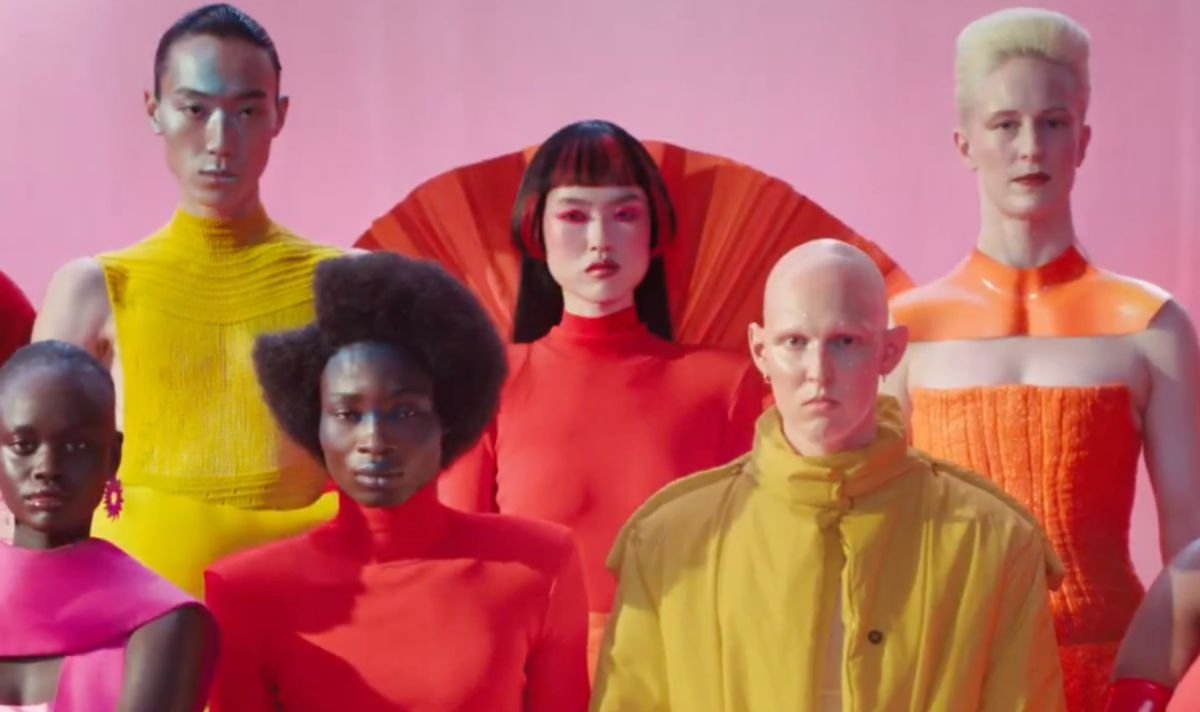Luxury British automaker Jaguar’s rebranding has sparked confusion and criticism online after the company released a promotional video that emphasized diversity rather than showcasing any cars.
The new advertisement, shared by the brand on X (formerly Twitter) on Tuesday, features models of different ages and ethnicities stepping out of an elevator, all styled in avant-garde clothing and makeup.
The 30-second commercial includes various slogans like “live vivid” and “delete ordinary,” but noticeably lacks any appearance of the vehicles Jaguar is known for.
This absence of cars has led to backlash from various quarters, including Tesla CEO Elon Musk. In response to the video, Musk commented, “Do you sell cars?”
A Jaguar spokesperson addressed the reaction with a statement, explaining, “Our brand relaunch for Jaguar is a bold and imaginative reinvention and as expected it has attracted attention and debate.
“As proud custodians at such a remarkable point in Jaguar’s history we have preserved iconic symbols while taking a dramatic leap forward.
The brand reveal is only the first step in this exciting new era and we look forward to sharing more on Jaguar’s transformation in the coming days and weeks.”
Lulu Cheng Meservey, co-founder of the PR group Rostra, criticized the rebrand as “disastrous.” She argued that any advertisement from Jaguar should highlight “innovation, and engineering” while maintaining a “clear lane for branding.”
She suggested that the company’s marketing team might have been overly influenced by “think pieces about how millennials shop based on values” and neglected that customers expect high-quality cars.
Some online commentators drew comparisons between Jaguar’s rebranding and Bud Light’s controversial decision to partner with transgender influencer Dylan Mulvaney last year.
Several users on X accused Jaguar of going “woke” and abandoning its traditional consumer base.
In defense of its advertisement, Jaguar’s official social media account responded to complaints with vague comments. Some replies included, “The story is unfolding. Stay tuned,” and “Think of this as a declaration of intent.”
Why is Jaguar Rebranding?
The rebranding effort follows a period of declining sales for the manufacturer. In the previous year, Jaguar sold fewer than 67,000 cars globally—roughly half the number sold during the fiscal year when the COVID-19 pandemic began.
The number of Jaguar dealerships in the U.S. has also dropped significantly, from around 200 to just 122, according to Car and Driver.
To prepare for a complete overhaul, Jaguar halted the sale of new cars more than a year ago, with an all-electric model expected to debut in 2026, followed by two others.

Rawdon Glober, Jaguar’s managing director, described the rebrand as necessary, saying in a press release, “Jaguar was always at its best when challenging convention.
That ethos is seen in our new brand identity today and will be further revealed over the coming months. This is a complete reset. Jaguar is transformed to reclaim its originality and inspire a new generation. I am excited for the world to finally see Jaguar.”
Jaguar’s chief creative officer, Professor Gerry McGovan, added, “This is a reimagining that recaptures the essence of Jaguar, returning it to the values that once made it so loved, but making it relevant for a contemporary audience.”
Jaguar Shifts Focus from Male Audience to Diversity
Historically, Jaguar has targeted affluent male drivers, as evidenced by its 2014 “Good to be Bad” campaign, which featured British male actors like Tom Hiddleston and Ben Kingsley as suave villains, reinforcing a masculine brand image.
However, the company now says it is pivoting to products aimed at the “design-minded” and the “cash rich, time poor.”
While Jaguar has not specified its new target demographic, it expects to lose a significant portion of its current customer base. “We assume that 10 to 15 percent of our current Jaguar customers will follow us, so relatively few,” said Glober in a July interview with Motor1.
In October, during the Attitude Awards—a celebration of LGBTQ+ icons sponsored by Jaguar—Santini Pietrosanti, the company’s head of brand strategy, discussed Jaguar’s renewed focus on inclusivity.
He said, “At Jaguar we are passionate about our people, and we are committed to fostering a diverse, inclusive and unified culture that is representative not only of the people who use our products, but in a society in which we all live, a culture in which our employees can bring their authentic selves to work.”
Pietrosanti also highlighted the creation of over 15 diversity, equity, and inclusion (DEI) groups within the company.
In response to the brand’s shift in focus, Meservey criticized the decision to abandon the traditional male demographic, questioning whether Jaguar had a clear understanding of its new target audience.
“If they’re going to abandon the male audience, they should replace it with a more lucrative audience, and it’s unclear who they’re going for here. Vegans?” she remarked.
Jaguar Faces Potential Backlash Similar to Bud Light
The trend of brands rebranding to attract younger and more diverse audiences has often been met with backlash. Bud Light, for instance, faced significant criticism after it partnered with Dylan Mulvaney, leading to calls for a boycott and a dramatic drop in sales.
Following the controversy, two marketing executives at Bud Light’s parent company, Anheuser-Busch InBev, took leaves of absence, and the brand lost its position as the top-selling beer in America.
Similarly, other companies such as Target and Starbucks have also experienced customer backlash after making moves to appeal to the LGBTQ+ community.
Target, in particular, faced protests and some store items were pulled from shelves following negative reactions to products sold during Pride Month.

